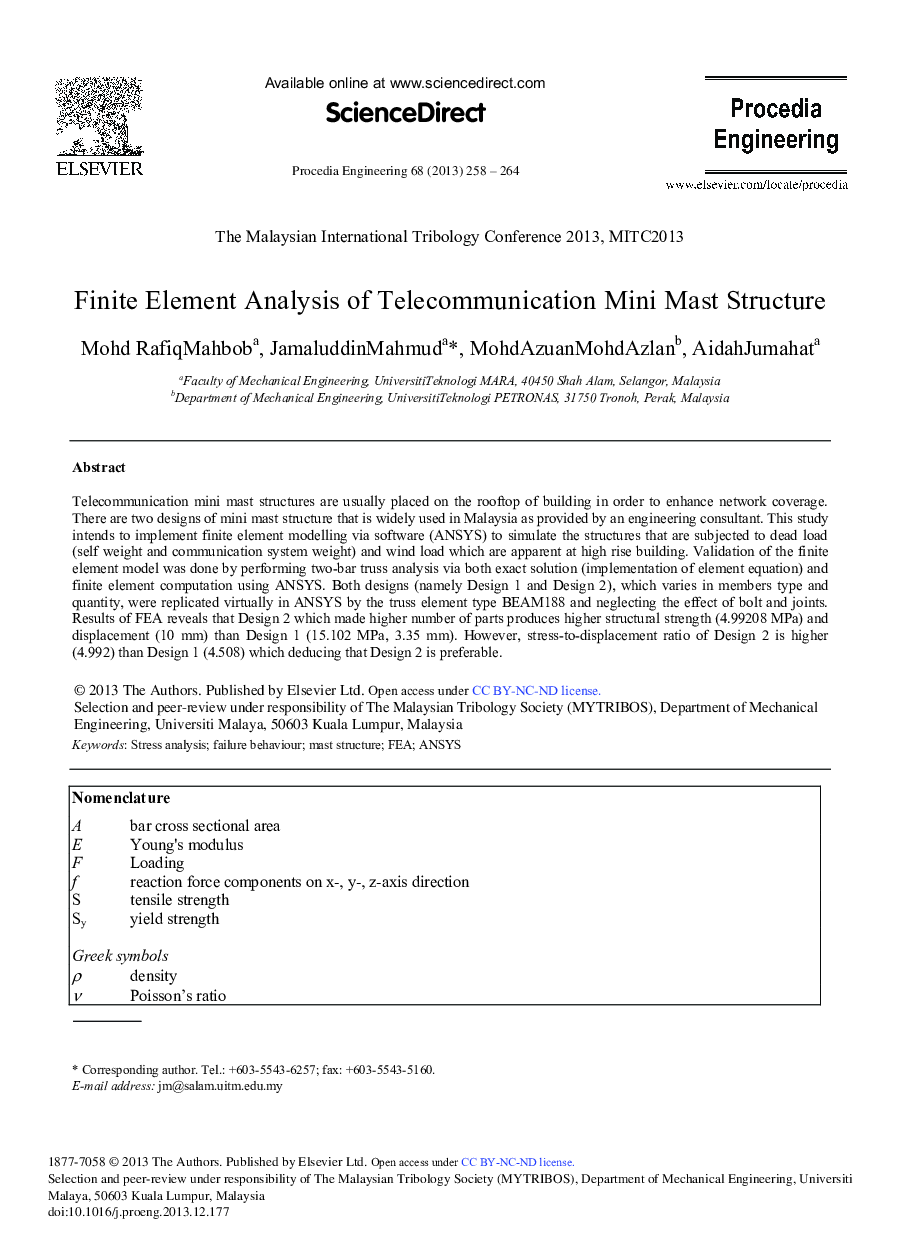| Article ID | Journal | Published Year | Pages | File Type |
|---|---|---|---|---|
| 859635 | Procedia Engineering | 2013 | 7 Pages |
Telecommunication mini mast structures are usually placed on the rooftop of building in order to enhance network coverage. There are two designs of mini mast structure that is widely used in Malaysia as provided by an engineering consultant. This study intends to implement finite element modelling via software (ANSYS) to simulate the structures that are subjected to dead load (self weight and communication system weight) and wind load which are apparent at high rise building. Validation of the finite element model was done by performing two-bar truss analysis via both exact solution (implementation of element equation) and finite element computation using ANSYS. Both designs (namely Design 1 and Design 2), which varies in members type and quantity, were replicated virtually in ANSYS by the truss element type BEAM188 and neglecting the effect of bolt and joints. Results of FEA reveals that Design 2 which made higher number of parts produces higher structural strength (4.99208 MPa) and displacement (10 mm) than Design 1 (15.102 MPa, 3.35 mm). However, stress-to-displacement ratio of Design 2 is higher (4.992) than Design 1 (4.508) which deducing that Design 2 is preferable.
